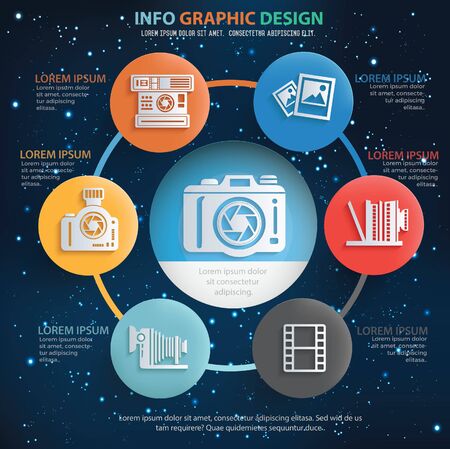Join Us To Discover Essential Digital Photography Pointers That Will Certainly Unlock Your Electronic Camera'S Potential-- Prepare To Record Stunning Pictures Quickly!
Join Us To Discover Essential Digital Photography Pointers That Will Certainly Unlock Your Electronic Camera'S Potential-- Prepare To Record Stunning Pictures Quickly!
Blog Article
Staff Writer-Barrett Odgaard
When you first get your camera, it can feel frustrating with all the settings and choices offered. You may find yourself asking yourself just how to navigate aperture, shutter speed, and ISO successfully. Understanding these fundamentals is crucial, however there's even more to digital photography than simply technical knowledge. Recognizing structure methods and lights conditions can elevate your photos considerably. So, what happens if you could find out simple strategies to boost your skills and begin catching excellent images earlier than you assume? Let's explore exactly how to transform your digital photography journey.
Understanding Cam Setups
Recognizing your cam setups is essential for catching spectacular pictures. When you grab your cam, acquaint yourself with the 3 primary settings: aperture, shutter rate, and ISO. Photography studio near me plays an essential duty in how your images turn out.
Beginning with https://mashable.com/shopping/feb-13-photography-business-bundle/ , which manages the quantity of light getting in the lens. A larger aperture (reduced f-number) lets in extra light and develops an attractive history blur, best for portraits. On the other hand, a narrower aperture (higher f-number) keeps even more of the scene in focus, ideal for landscapes.
Next, concentrate on shutter rate. This setup establishes how long your electronic camera's sensor is subjected to light. A rapid shutter speed freezes motion, which is excellent for activity shots, while a slow shutter rate can develop sensational impacts like smooth water in landscapes.
Lastly, readjust your ISO. This setting influences your electronic camera's level of sensitivity to light. A greater ISO serves in low-light scenarios but can present noise or grain. https://blogfreely.net/mariette158azalee/exploring-the-world-through-the-lens-travel-photography-essentials for the most affordable ISO possible while still accomplishing correct exposure.
Composition Methods
When you're out shooting, structure can make all the difference in how your photos resonate with customers. Begin by using the guideline of thirds; envision your framework separated into 9 equivalent sections with two horizontal and two vertical lines. Position crucial elements along these lines or at their intersections to develop balance and rate of interest.
Next off, take into consideration leading lines. These natural lines in your scene, like roads or rivers, attract the viewer's eye right into the picture, directing them via the tale you're telling.
Don't forget mounting; use components within your scene, like trees or windows, to produce a framework around your subject, adding depth and emphasis.
Likewise, watch on your history. A chaotic history can distract from your main topic, while a basic one aids it stick out.
Lastly, trying out proportion and patterns; they can create a striking picture that catches interest.
Learning Lights Issues
Grasping lights problems is essential for recording stunning photographs, as the right light can transform an ordinary scene into something phenomenal.
Beginning by observing natural light at different times of the day. Early mornings and late afternoons provide the best light, referred to as the gold hour. The soft, warm tones during these times can improve your images magnificently.
Do not avoid overcast days either; diffused light can reduce extreme shadows and produce a pleasing result, specifically for pictures.
Try out backlighting by placing your subject against the light source. This technique can create a dreamy halo effect and add depth to your pictures.
Pay attention to your electronic camera setups too. Readjust the ISO, aperture, and shutter rate to suit the lighting problems. A higher ISO can assist in low light, but be cautious of grain.
Make use of a tripod in darker settings to stay clear of blur.
Finally, don't forget synthetic lights. Flash and continuous lights can be excellent devices for managing light in tough problems.
Verdict
In conclusion, mastering your camera doesn't have to be frustrating. By recognizing your setups, using composition methods, and utilizing the power of natural light, you'll promptly raise your photography skills. Remember, practice makes best, so go out there and experiment with your newfound understanding. With time and dedication, you'll be catching spectacular images that mirror your distinct perspective. Enjoy the journey, and don't fail to remember to have fun while you're at it!
